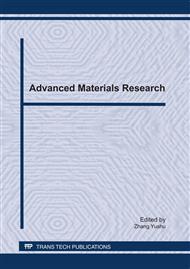p.68
p.73
p.78
p.83
p.88
p.93
p.98
p.103
p.107
Numerical Simulation on Bending Characteristics of Aluminium Foam Filled Thin-Walled Tubes
Abstract:
Different aluminum foam filling lengths were used to increase the bending energy absorbing capacity of the popularly used hat sections. Bending energy-absorption performance of the thin-walled tubes was numerically studied by explicit non-linear software LS-Dyna. First empty hat section subjected to quasi-static bending crushing was simulated, then structures with different aluminium foam filling lengths were calculated, finally energy absorption capacity of these structures were compared. Calculation results showed that, the internal energy absorbed and mass specific energy absorption capacity of foam filled thin walled structures were increased significantly compared to the empty sections. The reason of the improvement was mainly due to the contact of the aluminium foam and the structure. Aluminium foam filling is a promising method for improving lateral energy absorbing capacity of thin-walled sections.
Info:
Periodical:
Pages:
88-92
Citation:
Online since:
February 2011
Authors:
Price:
Сopyright:
© 2011 Trans Tech Publications Ltd. All Rights Reserved
Share:
Citation:


